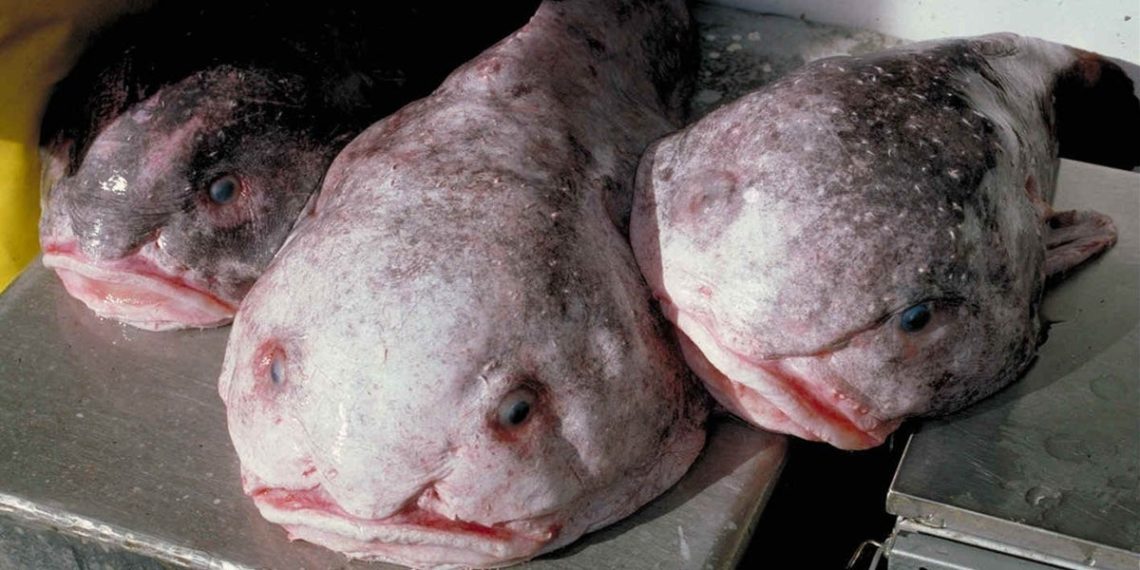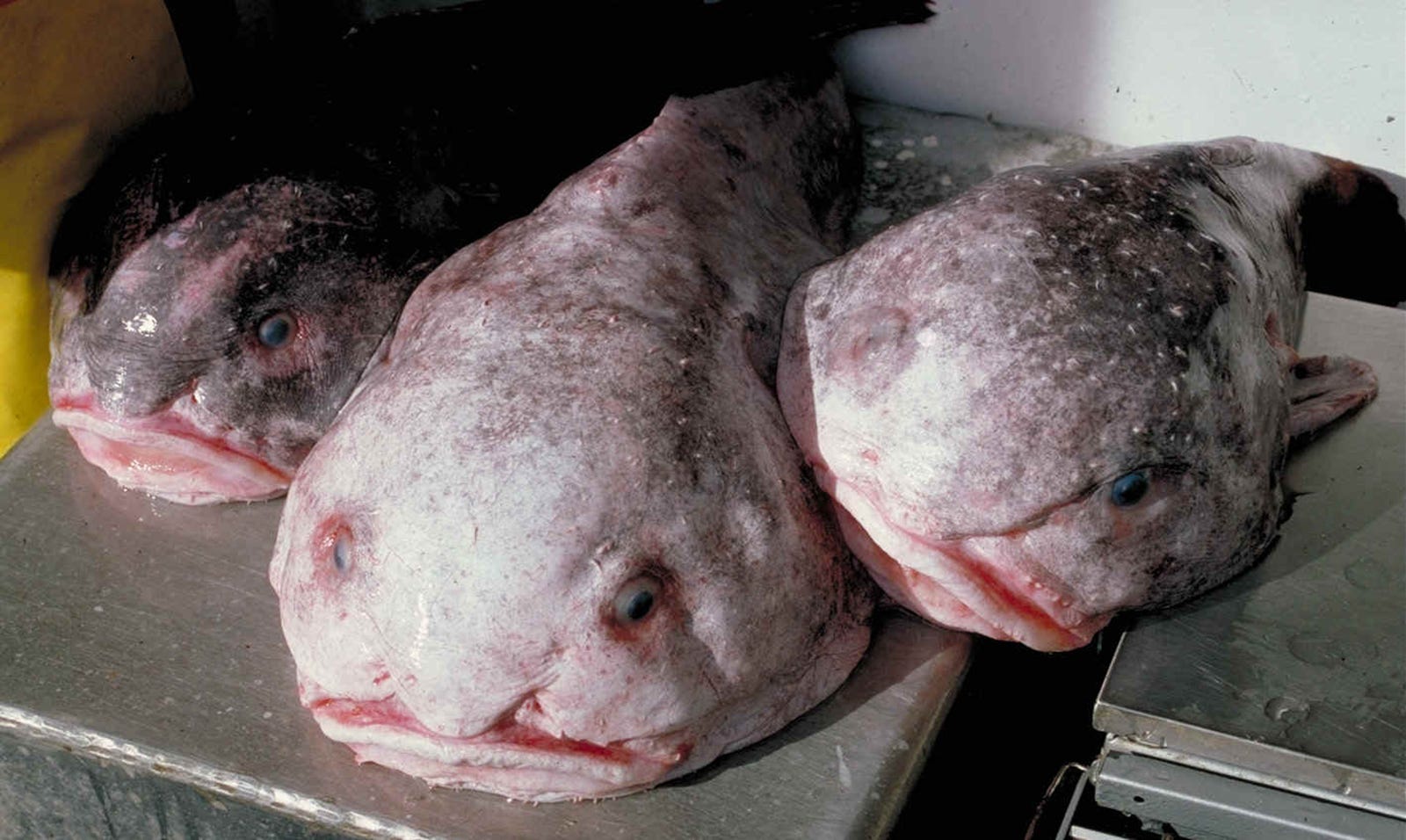
: HUM Images/Universal Images Group via Getty Images
Ghosts, goblins, spiders, and wolves don’t just show up in fairytales. Some deep-sea creatures are named after frightening or mythical creatures thanks to their eerie appearances.
However, strange snouts, enormous eyes, and sharp teeth all help these animals survive the cold, dark depths of the ocean. So much is unknown about the deep sea, and these unusual adaptations can teach scientists more about what life is like thousands of feet beneath the waves.
Scientists need remotely operated vehicles to capture images and video of some of these species. Watching them in their natural habitat offers insight into the behavior of fish, cephalopods, and crustaceans that don’t often surface.
Here are 15 bizarre ocean dwellers that show just how mysterious much of our own planet still is.
Known as a living fossil, the frilled shark has retained some of the features of its ancient ancestors.
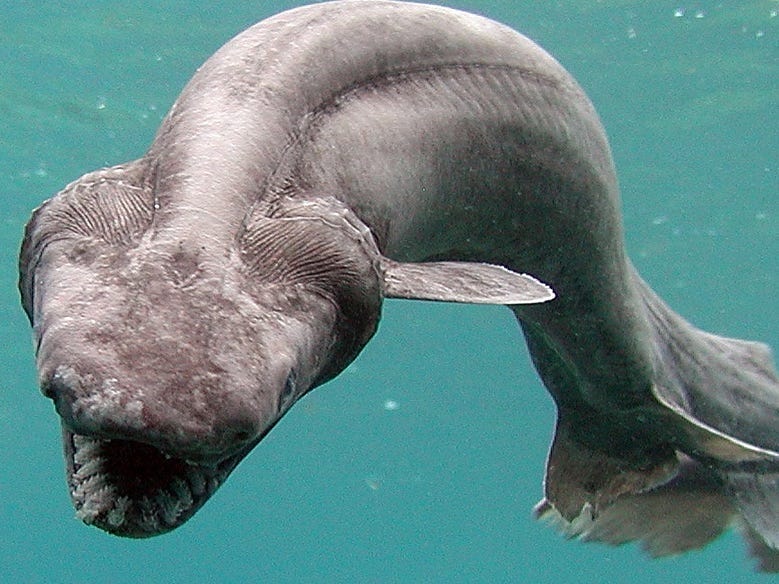
Awashima Marine Park/Getty Images
Decorative-looking gills inspired this animal’s name. With its prehistoric-looking appearance, the frilled shark hasn’t changed much in several million years. Biologists study them to learn more about how sharks evolved particular traits.
Though they’re spread throughout the Atlantic and Pacific Oceans, they’re rarely spotted, though fishers do catch them.
What’s most unusual about this shark is the way it reproduces. Females give birth to live young after a 3.5-year pregnancy, one of the longest known gestations of any vertebrates, according to a 2020 study.
Growing to at least 6 feet long, these predators primarily prey on squid and fish.
Hagfish consume the decaying carcasses of other sea creatures by burrowing into them with tooth-like structures.

Paul Bersebach/MediaNews Group/Orange County Register via Getty Images
There are estimated to be 76 species of hagfish, some living 5,600 feet below the surface. Although they’re fish, they are also known as slime eels because of the goop their bodies produce to ward off predators, according to Chapman University.
Researchers are exploring ways the gel-like substance could be used in industrial or medical applications, including healing burns.
Certain species of the jawless fish can grow to 4 feet long, while others are only a few inches.
Sharp, canine-like teeth explain why this species is known as the Atlantic wolffish.
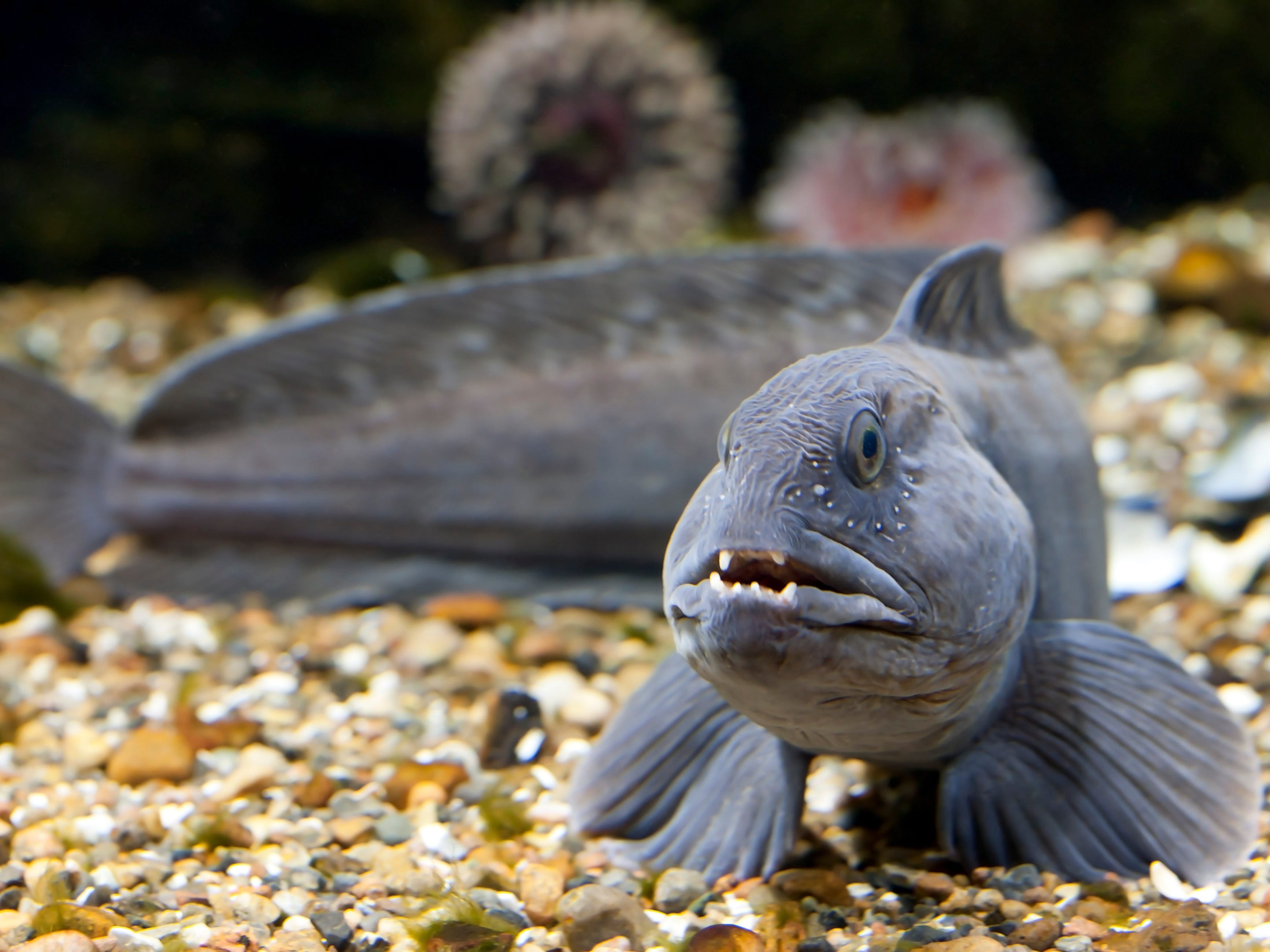
myLoupe/Universal Images Group via Getty Images
Typically feeding on scallops, hermit crabs, and sea urchins, this creature has several rows of pointy teeth, some protruding from its mouth. A powerful bite helps it break through hard shells.
You’ll find the Atlantic wolffish along North America’s Atlantic Coast. Preferring chillier water and rocky areas, it lives as deep as 1,640 feet. To survive frigid temps, they make a special kind of antifreeze so ice doesn’t form in their bodies, according to a 2007 study.
Its eel-like body grows to around 3 feet long, though it can be up to 2 feet longer. Other names for the wolffish include the ocean catfish and wolf eel.
The goblin shark can have more than 100 teeth in its mouth.
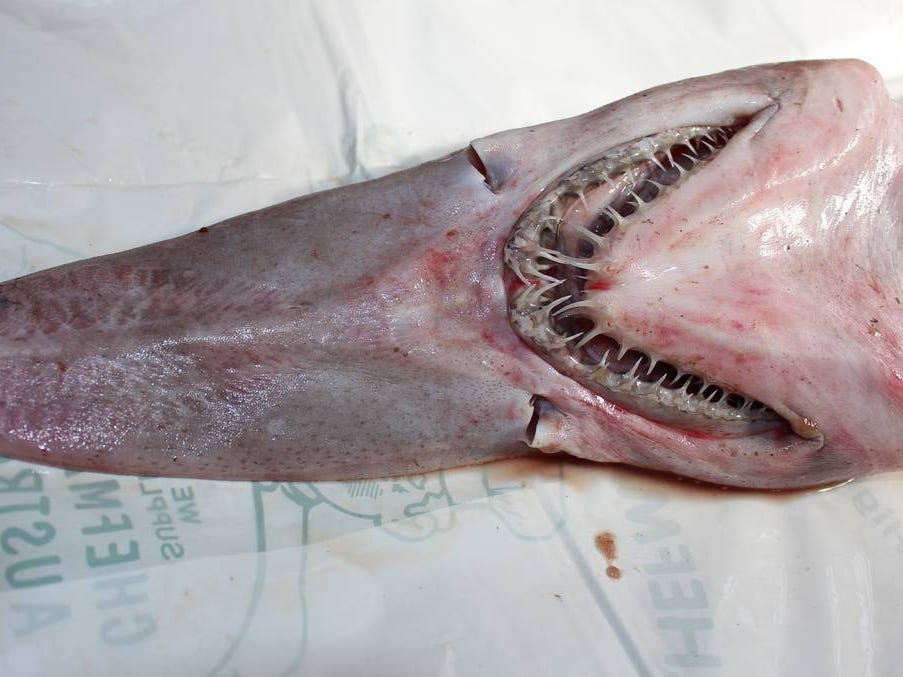
Fairfax Media via Getty Images
You can identify goblin sharks, a rarely seen bottom-dwelling species, by the shape of their snouts, which are long and flat.
Inside their mouths is a mix of spiky, grooved teeth and flat teeth. There can be as many as 53 in the top jaw and 62 in the lower, according to the Florida Museum of Natural History.
When it chows down on bony fish, crustaceans, and squid, the shark uses a method called slingshot feeding. At the lightning-fast rate of almost 7 miles per hour, they protrude their jaws and snatch their prey. Scientists first reported observing the behavior in a 2016 paper.
A Japanese spider crab can weigh up to 44 pounds.
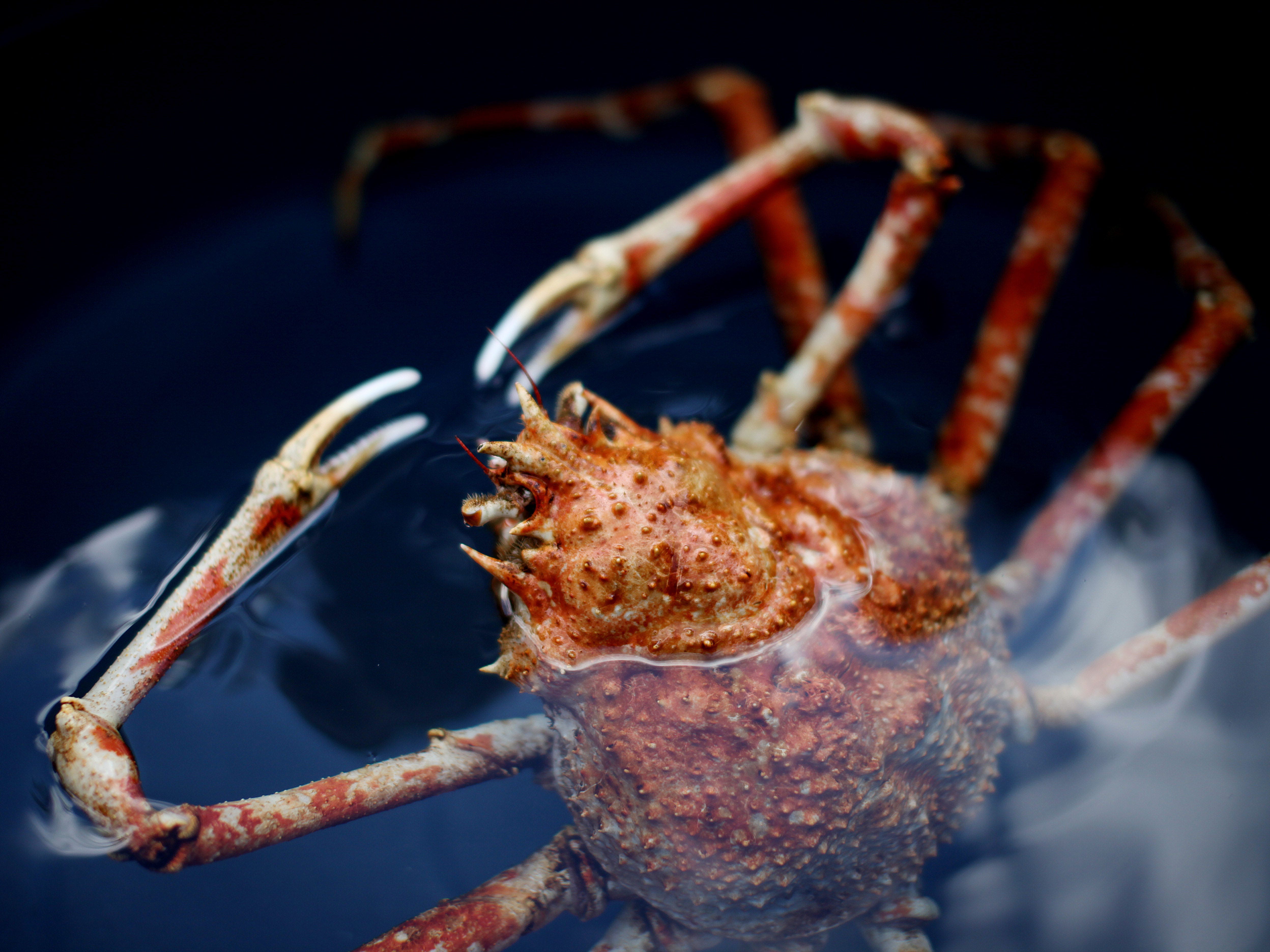
Sandy Huffaker/Corbis via Getty Images
Native to the Pacific Ocean, the Japanese spider crab grows up to 15 inches wide with legs that extend to 13 feet, according to Smithsonian Ocean. It’s one of the largest known arthropods, a group of invertebrates that also includes lobsters, spiders, and insects.
Often, these crabs are found missing one or more of their spindly legs. Instead of hunting, they generally scavenge for food, drifting along the seafloor instead of swimming.
Their lifespan remains a mystery, but some estimates say they could live as long as 50 to 100 years.
Vampyroteuthis infernalis, the vampire squid’s scientific name, means “vampire squid from hell.”
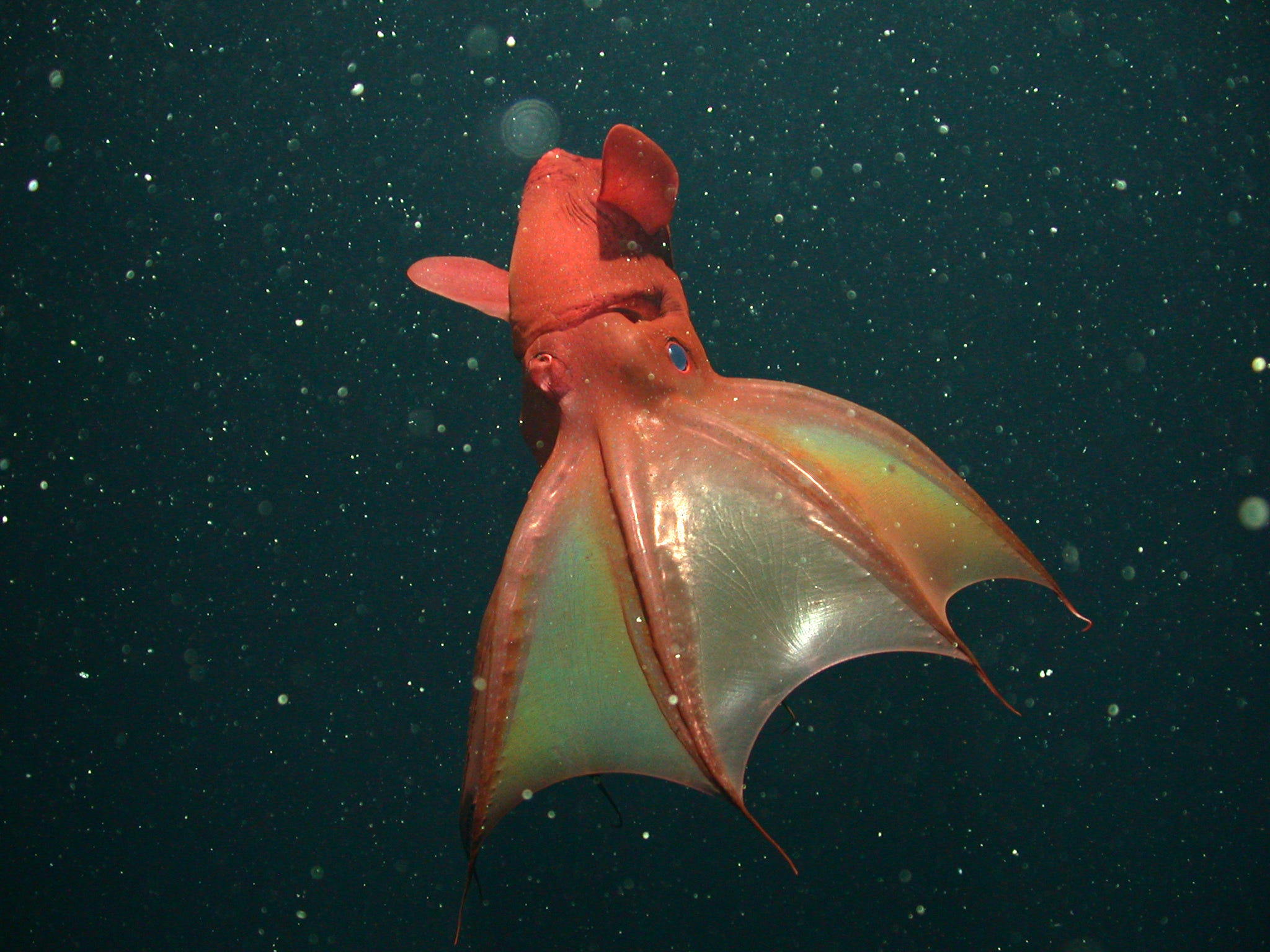
Monterey Bay Aquarium Research Institute
This cephalopod is neither a squid nor an octopus but has traits of both, occupying its own separate taxonomy or scientific classification.
Found over 2,000 feet down in the inky depths of the mesopelagic zone, the vampire squid doesn’t feed on blood. Instead, this creature subsists on marine snow, organic material that falls to the ocean floor as dead animals decay.
The cephalopod gets its name from the webbing that connects its arms, creating the appearance of a cloak similar to something hanging in Dracula’s closet.
At 12 inches, it’s about twice as long as a typical sub sandwich. A small size doesn’t mean it’s defenseless. When predators approach, the vampire squid puffs out a cloud of bioluminescent mucus.
A bioluminescent growth on the anglerfish’s head lures prey to its death.

Reuters/Victor Fraile (China)
You can find this type of fish practically all over the globe. There are more than 200 species of anglerfish, coming in a variety of shapes and sizes. Some swim in coral reefs, while others stay far from sunlight in the ocean’s midnight zone.
Only females possess the iconic, bioluminescent apparatus. Sometimes researchers refer to it as a fishing rod, which includes its own lure. Part of the dorsal fin extends from the head, with a tip of glowing bacteria that invites squids, worms, and other animals to get a little closer. That’s when the anglerfish suctions in its feast.
Meanwhile, when some species reproduce, the male permanently attaches to the female as a parasite, according to Yale News.
Due to their long, tapered bodies, grenadiers are known as rattails.

NOAA OKEANOS EXPLORER Program, Oceano Profundo 2015; Exploring Puerto Rico’s Seamounts, Trenches, and Troughs
Grenadiers are a family of fish containing over 300 species. Their range is worldwide in the bathyal and abyssal zones, as deep as 13,100 feet.
They skim above the seafloor, and some researchers believe they’ve adapted several traits, like gelatinous tissue and less dense muscles, to increase buoyancy at those depths.
Gigantic eyes help these fish spot bioluminescent prey in the darkened waters. If they aren’t able to catch their dinner, many species will scavenge, sniffing out decaying animals.
The ghost shark bears an uncanny resemblance to Zero, the dog from “The Nightmare Before Christmas.”
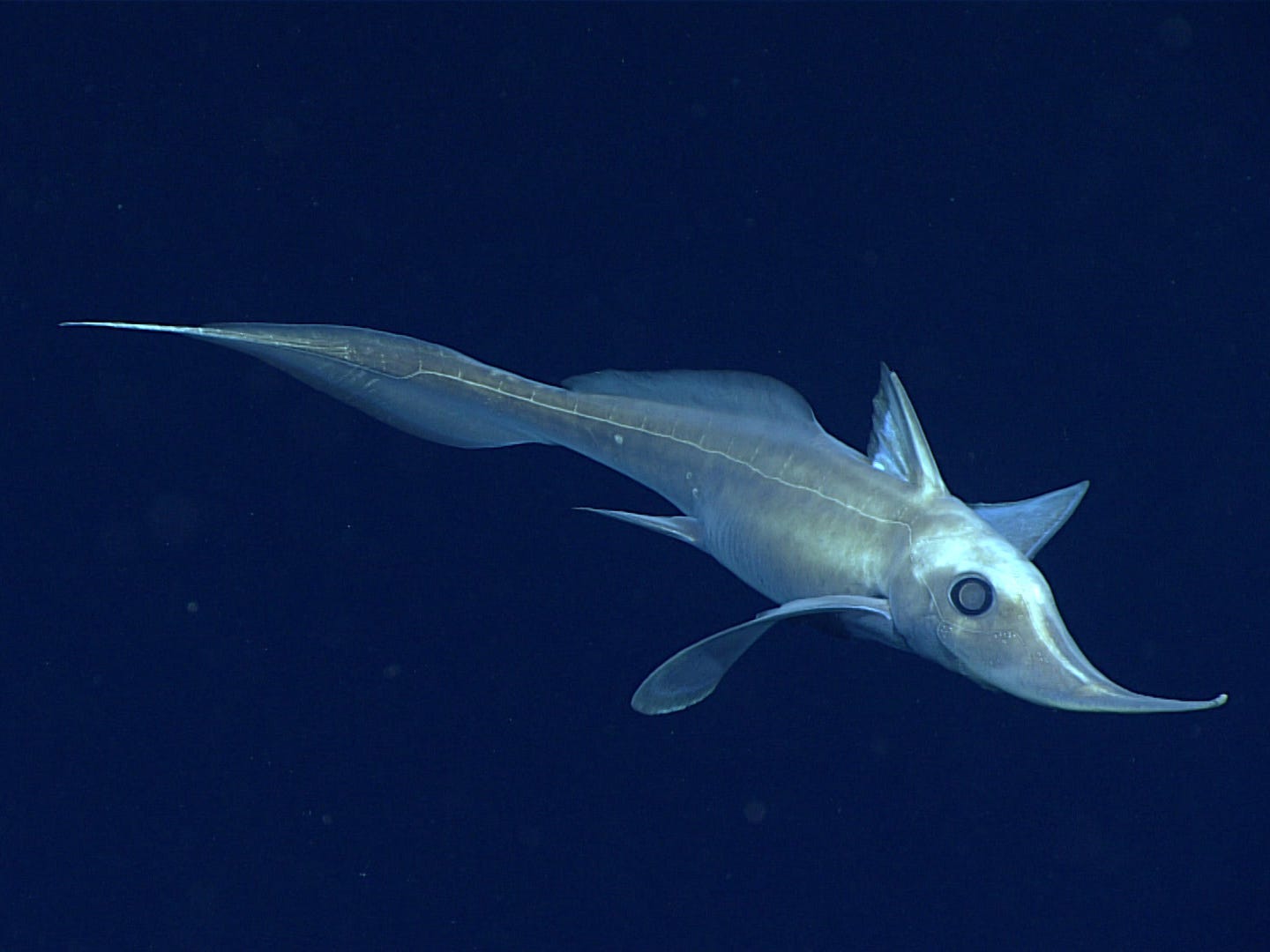
NOAA Office of Ocean Exploration and Research, Gulf of Mexico 2017
Like sharks and rays, ghost sharks, also known as chimaera, are cartilaginous fish. A protruding snout detects electric fields and movement as they hunt for prey in the sand. Near their dorsal fin, a venomous spine provides protection from predators.
Fossil evidence shows that chimera have been around for millions of years. The earliest specimen, a skull, was unearthed in South Africa and dated to about 280 million years ago, according to UChicago News. Their ancestors split off from sharks nearly 400 million years ago.
Scientists have found over a dozen new chimaera species in recent decades but worry that the fish will go extinct before they have a chance to learn more about them, The New York Times reported in 2020.
The sarcastic fringehead is an aggressive big mouth.
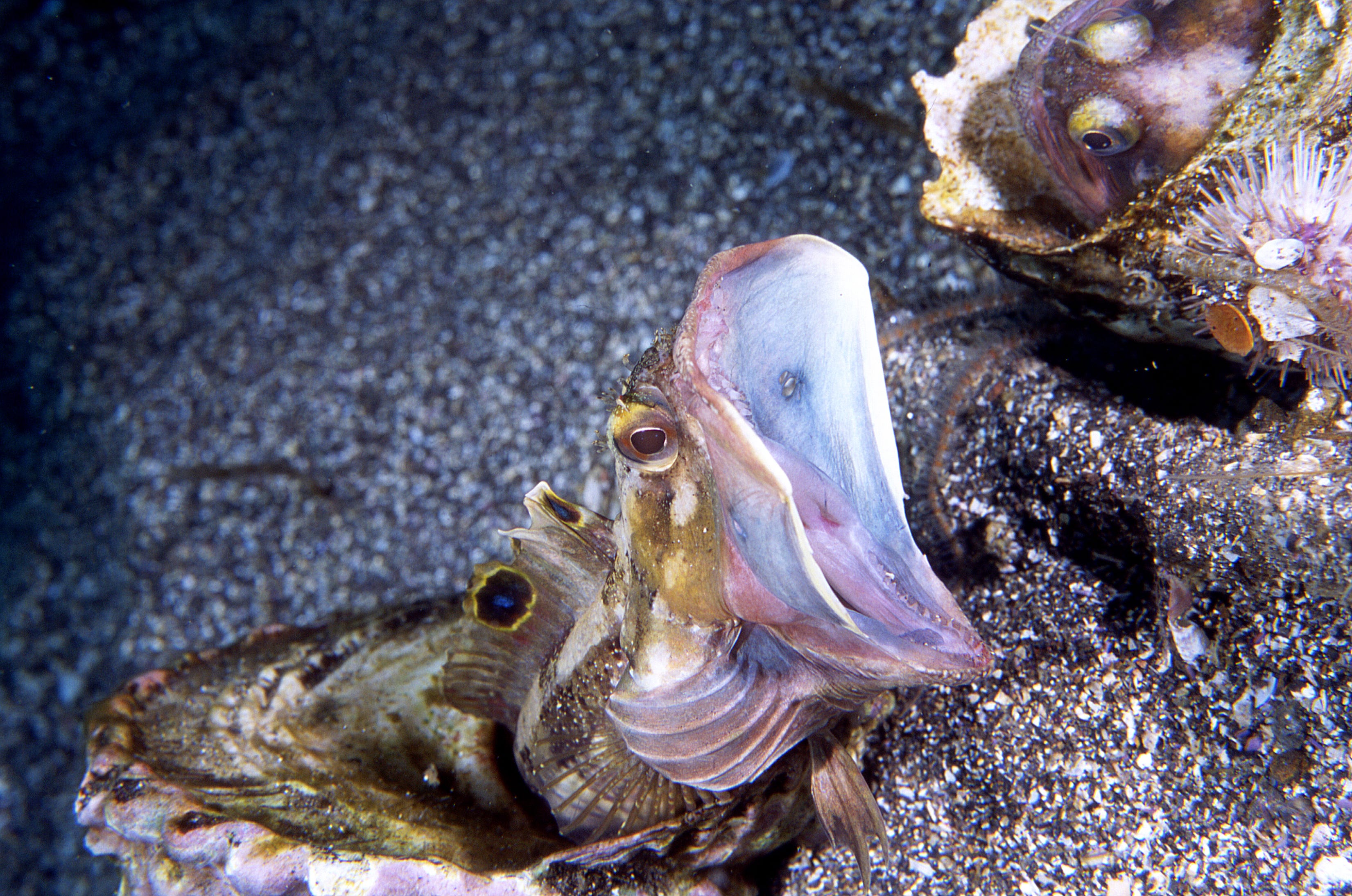
Joe Belanger/Shutterstock
Due to its frilly forehead and tendency to get irritable when anything approaches, researchers dubbed this fish the sarcastic fringehead, The New York Times reported in 2022.
Native to the Pacific Ocean near California and Mexico, it’s a kind of tube blenny, a type of small fish that takes over abandoned worm tubes. Fringeheads have also been known to take up residence in discarded soda cans, according to AAAS.
Though they’re usually only 3 to 8 inches, their fluorescent-rimmed mouths can open enormously wide. It’s a little like when the Dilophosaurus dinosaur expands its neck frill in “Jurassic Park.” Researchers think this display acts as a warning to members of its own species.
The barreleye has a see-through, fluid-filled head.
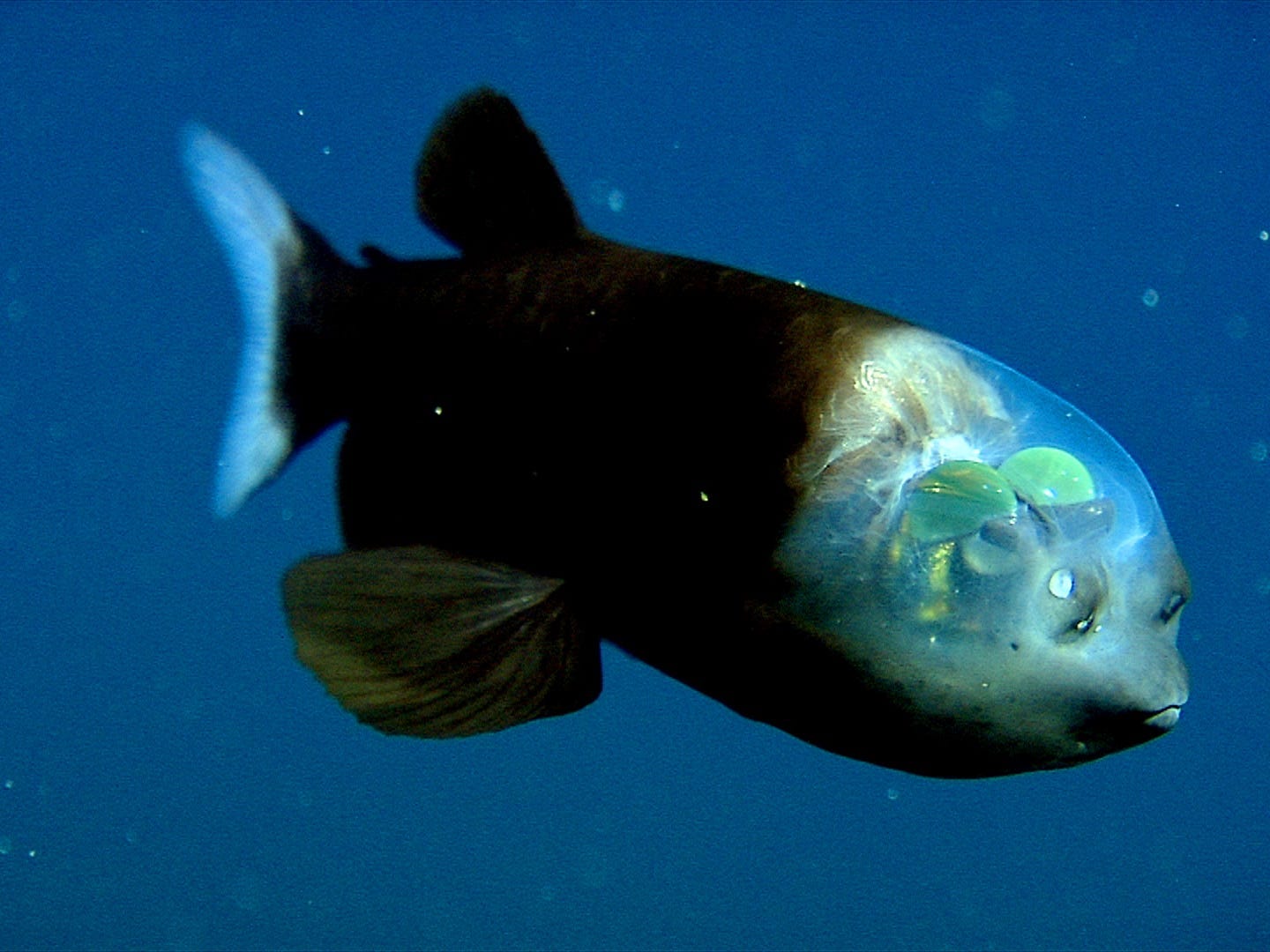
Monterey Bay Aquarium Research Institute
Scientists first described the barreleye in 1939, taking note of its light-sensitive eyes with vibrant green lenses. At the time, they thought the fish could only see what was directly above it.
Decades later, researchers at the Monterey Bay Aquarium Research Institute discovered that its large, tubular eyes could actually rotate. This ability allows them to look upward for potential prey or face forward to see what it is eating. Yellow pigment in the eyes helps them distinguish between sunlight and bioluminescence, making them better able to spot food.
Barreleyes may sneak up on siphonophores and nab some of their prey, researchers told The Guardian in 2022. The transparent shield may protect their eyes from their prey’s whirling tentacles.
An online poll called the blobfish the “world’s ugliest animal.”
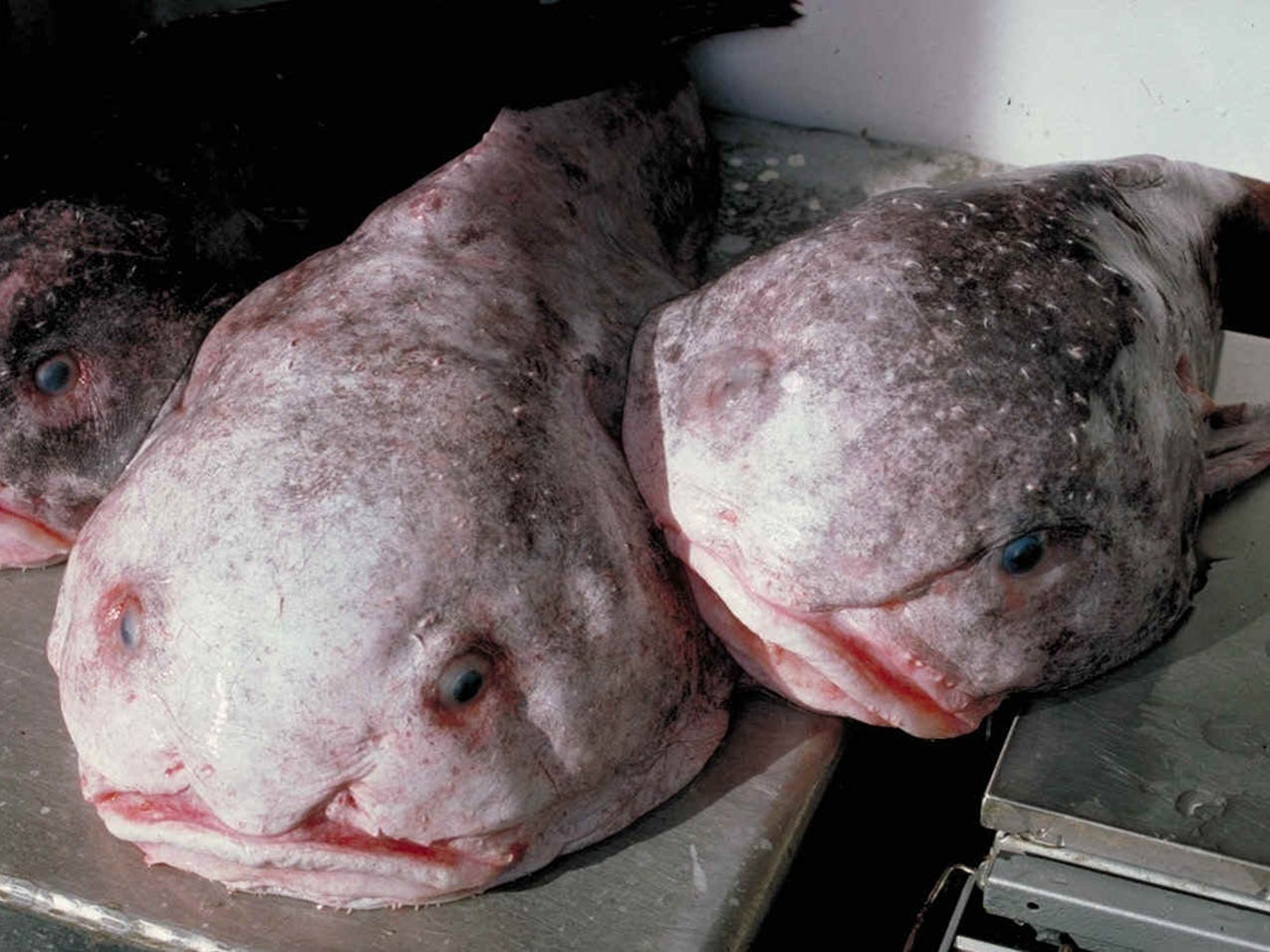
: HUM Images/Universal Images Group via Getty Images
A 2013 poll conducted by a British organization called the Ugly Animal Preservation Society gave the “world’s ugliest animal” title to the blobfish. It belongs to the fathead sculpin family, a group of tadpole-esque fish that dwells in the Atlantic, Pacific, and Indian Oceans at between 330 and 9,200 feet.
When a blobfish is on land, gelatinous fluid under its skin droops like melting Jell-O. Fathoms below the sea, the water gives support and structure to the goo, making the blobfish look more fish-like.
Not only does the fish appear less strange underwater, but its jelly-like fluid helps it maintain depth without the aid of a swim bladder. Blobfish lack this gas-filled bladder, which some other fish use for buoyancy.
An apex predator of the deep, the deepwater lizardfish can be cannibalistic.
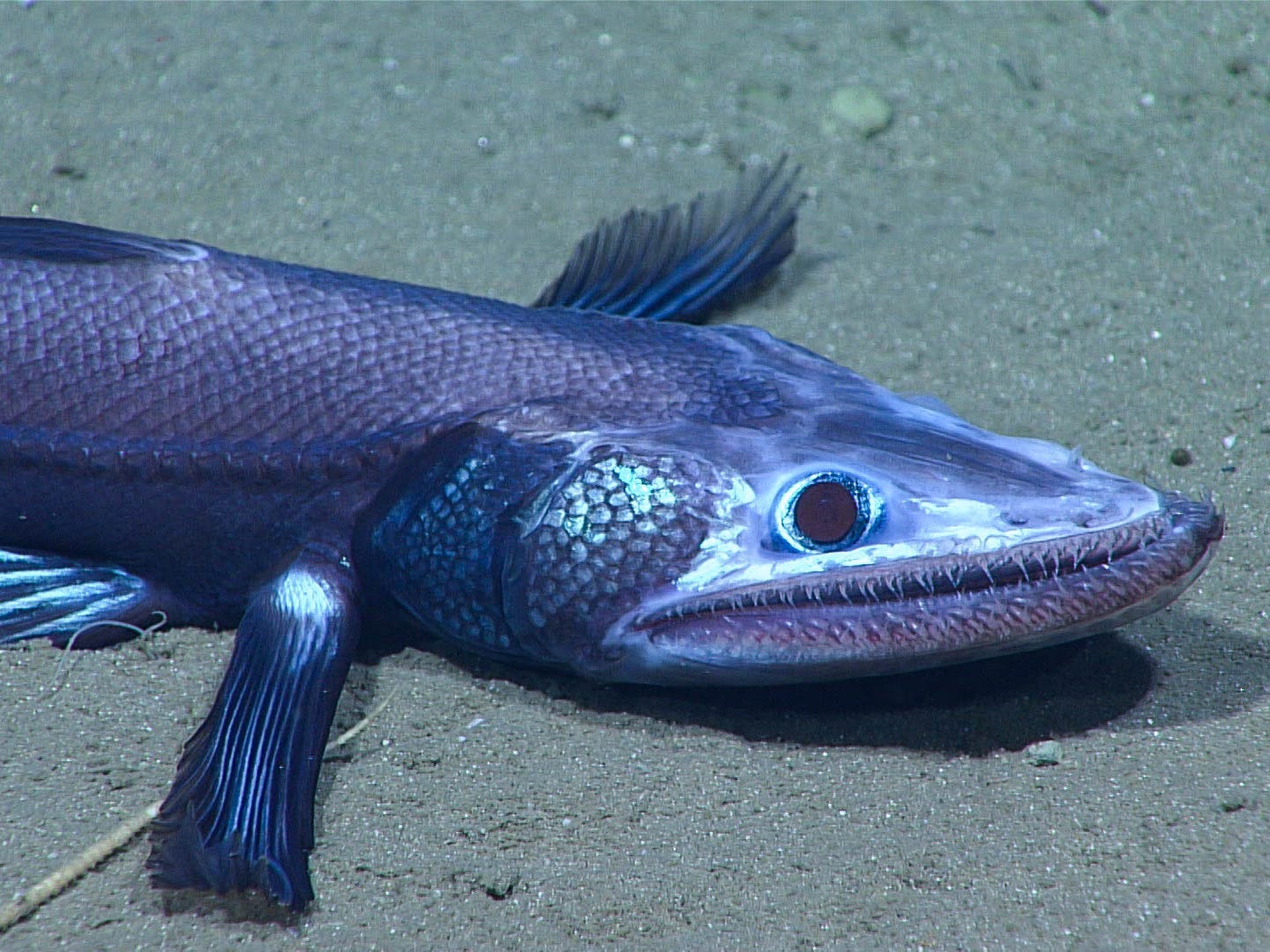
NOAA Office of Ocean Exploration and Research, Windows to the Deep 2018
Two species, Bathysaurus mollis and Bathysaurus ferox, make up this genus. B. molis have been known to travel as deep as 16,085 feet.
Deepwater lizardfish can grow to be more than 2 feet long. Large eyes and a mouthful of teeth mean their likely ambush predators, National Geographic reported in 2017.
While much is unknown about these fish, they do eat their own species, according to NOAA.
The slender snipe eel can grow to be at least 4 feet long, but it weighs only a few ounces.
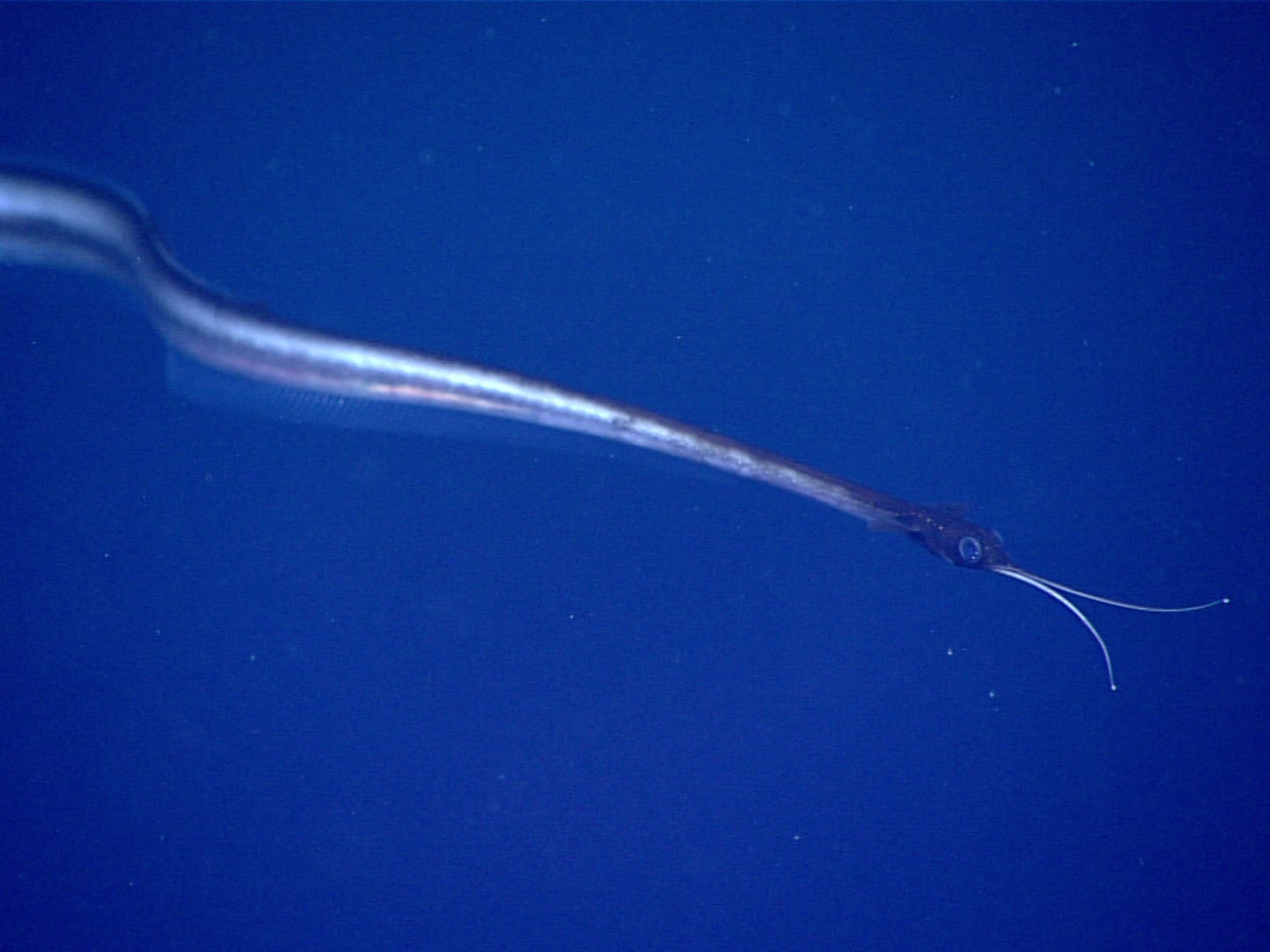
NOAA Office of Ocean Exploration and Research, Gulf of Mexico 2017
The slender snipe eel can grow to a length of 4 feet, with around 750 vertebrae packed into its ribbon-like body. Thanks to a long, narrow snout, its jaws resemble a bird’s beak.
Scientists aren’t entirely sure how this eel catches its prey, but they speculate that the process involves swimming with its mouth open. Crustaceans’ antennae may catch on the snipe eel’s inward-curving teeth, preventing escape.
Making its home in the open ocean, this fish is fairly enigmatic because scientists haven’t had many opportunities to study it.
The teeth on Sloane’s Viperfish create a cage, locking other fish inside.
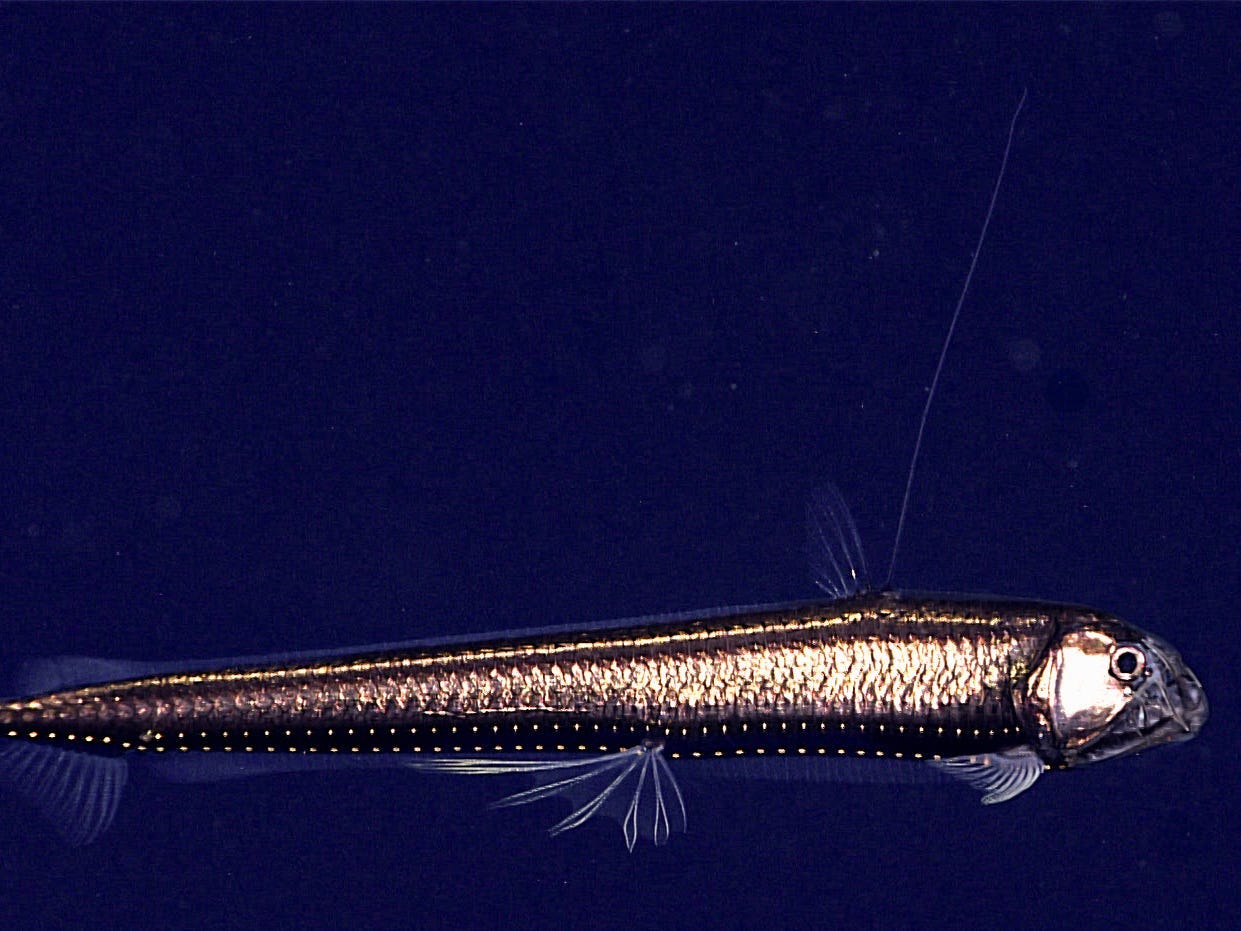
NOAA Ocean Exploration, 2025 Beyond the Blue
The ocean’s mesopelagic zone is also known as the twilight zone, roughly 650 to 3,300 feet below the surface. It’s where Sloane’s viperfish goes to hunt. While viperfish spend much of their time thousands of feet deep, they also vertically migrate, rising closer to the surface when it’s time to feed.
Topping out at about 10 inches, they can gulp down larger animals by unhinging their jaws and expanding their stomachs. The predator uses its icicle-looking teeth to trap crustaceans and lanternfish. Researchers think these fish can do days without eating, especially after consuming prey that’s larger than they are.
On their undersides, light-producing organs called photophores shine blueish green and yellow. It helps disguise them from predators below, while a bioluminescent lure may also draw in prey.
Sources for this article include the National Oceanic and Atmospheric Administration; Monterey Bay Aquarium Research Institute; the Natural History Museum, London; the Australian Museum; the Smithsonian Institution; Woods Hole Oceanographic Institution; the Marine Science Institute at the University of Texas at Austin; Hawaii’s Division of Aquatic Resources; the Alaska Department of Fish and Game; the New Hampshire Fish and Game Department; the Maine Department of Marine Resources Recreational Fisheries; and the Georgia Aquarium.
This article was first published in April 2018 and was updated on May 27, 2025.
The post 15 bizarre creatures from the bottom of the ocean that look like aliens appeared first on Business Insider.
